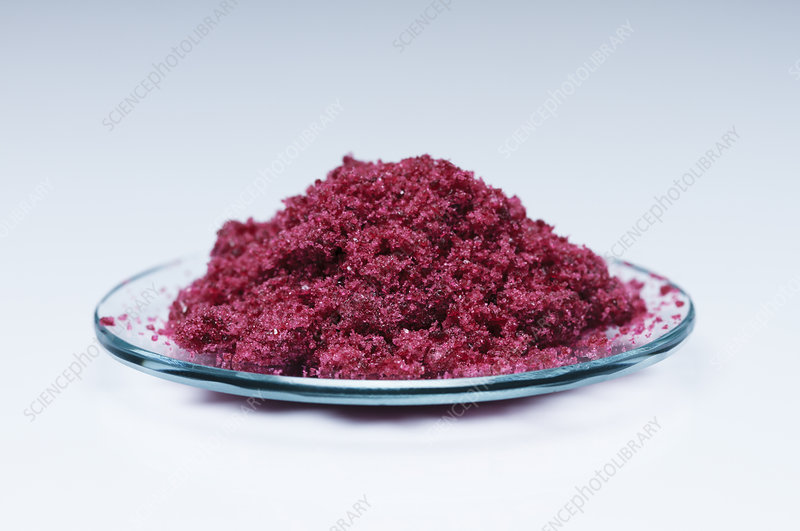Cobalt (II) Acetate is a vital inorganic compound with the chemical formula Co(CH₃COO)₂. This reddish-pink crystalline solid serves as a versatile catalyst and precursor in numerous chemical processes. As industries increasingly seek efficient and specialized chemical solutions, Cobalt (II) Acetate continues to play a crucial role in organic synthesis, coatings, and energy storage applications. This article provides a comprehensive examination of Cobalt (II) Acetate, covering its chemical properties, manufacturing processes, key applications, safety considerations, and market outlook.
Chemical and Physical Properties of Cobalt (II) Acetate
Cobalt (II) Acetate exhibits several distinctive characteristics that make it valuable for industrial use:
Basic Properties
-
Chemical Formula: Co(C₂H₃O₂)₂ or Co(CH₃COO)₂
-
Molar Mass: 177.02 g/mol (anhydrous); 249.08 g/mol (tetrahydrate)
-
Appearance: Reddish-pink crystalline powder (anhydrous); rose-red crystals (tetrahydrate)
-
Solubility: Highly soluble in water and polar organic solvents
-
Melting Point: Decomposes at ~140°C (tetrahydrate form)
Structural Characteristics
-
Typically exists as a tetrahydrate (Co(CH₃COO)₂·4H₂O) under standard conditions
-
Forms octahedral coordination complexes with water molecules
-
Anhydrous form can be obtained through careful dehydration
Chemical Behavior
-
Acts as a mild oxidizing agent
-
Serves as a source of cobalt ions in solution
-
Participates in various coordination chemistries
-
Demonstrates stability in dry air but may absorb moisture
Production Methods for Cobalt (II) Acetate
The industrial synthesis of Cobalt (II) Acetate typically follows these processes:
1. Direct Reaction Method
-
Cobalt carbonate or cobalt hydroxide reacts with acetic acid:
CoCO₃ + 2CH₃COOH → Co(CH₃COO)₂ + H₂O + CO₂↑ -
Yields high-purity Cobalt (II) Acetate suitable for technical applications
2. Metal Dissolution Process
-
Electrolytic cobalt or cobalt oxide dissolves in acetic acid:
CoO + 2CH₃COOH → Co(CH₃COO)₂ + H₂O -
Cost-effective for large-scale production
3. Purification and Crystallization
-
Solution concentration under controlled conditions
-
Crystallization to obtain tetrahydrate form
-
Optional dehydration for anhydrous product
Industrial Applications of Cobalt (II) Acetate
Cobalt (II) Acetate serves as a critical component across multiple industries:
1. Chemical Manufacturing
-
Oxidation Catalyst: Essential for terephthalic acid production in PET plastic manufacturing
-
Esterification Promoter: Facilitates synthesis of various esters
-
Polymerization Initiator: Used in specific plastic production processes
2. Paints and Coatings
-
Drier Agent: Accelerates the drying of paints, varnishes, and inks
-
Pigment Precursor: Serves as an intermediate in cobalt pigment production
-
Corrosion Inhibitor: Provides protective properties in specialty coatings
3. Energy Storage Systems
-
Battery Component: Used in some lithium-ion battery formulations
-
Fuel Cell Catalyst: Investigated for oxygen reduction reactions
4. Organic Synthesis
-
Carbonylation Reactions: Facilitates insertion of carbonyl groups
-
Hydroformylation: Important in aldehyde production
-
Cross-Coupling Reactions: Useful in pharmaceutical intermediates
5. Research and Specialty Chemistry
-
Electrolyte Additive: For electroplating and electrochemical studies
-
Analytical Reagent: Used in various laboratory applications
-
Coordination Chemistry: Building block for complex synthesis
Technical Specifications and Grades
Cobalt (II) Acetate is available in several grades to meet diverse industrial needs:
| Grade | Purity | Typical Applications |
|---|---|---|
| Industrial | 98-99% | Paints, catalysts, chemical synthesis |
| Reagent | ≥99% | Laboratory research, analytical applications |
| High-Purity | ≥99.9% | Electronics, advanced materials |
| Food/Pharma | Meets USP/EP | Specialized catalytic applications |
Safety and Handling Guidelines
While Cobalt (II) Acetate is generally stable, proper precautions are essential:
Health Considerations
-
Inhalation Risk: May cause respiratory irritation
-
Skin Contact: Can lead to dermatitis with prolonged exposure
-
Eye Hazard: Causes irritation upon contact
-
Ingestion: Harmful if swallowed
Safety Measures
-
Personal Protection: Gloves, goggles, and dust masks recommended
-
Ventilation: Use in well-ventilated areas
-
Storage: Keep in tightly sealed containers away from acids
-
Spill Response: Contain and collect with inert absorbent material
Regulatory Status
-
Listed on REACH and TSCA inventories
-
Classified as hazardous in many jurisdictions
-
Subject to specific transportation regulations
Market Trends and Future Outlook
The global market for Cobalt (II) Acetate shows steady growth driven by:
Current Demand Factors
-
Expanding PET plastic production
-
Growth in paint and coating industries
-
Increasing battery technology research
-
Development of new catalytic processes
Future Opportunities
-
Advanced Energy Storage: Potential in next-generation batteries
-
Green Chemistry: Role in sustainable catalytic processes
-
Electronics: Emerging applications in semiconductor manufacturing
-
Pharmaceuticals: Novel synthetic pathways
Challenges
-
Price Volatility: Dependent on cobalt market fluctuations
-
Regulatory Pressure: Increasing scrutiny on cobalt compounds
-
Substitution Threats: Development of alternative catalysts
Comparison with Similar Cobalt Compounds
Cobalt (II) Acetate offers distinct advantages over other cobalt salts:
| Property | Cobalt (II) Acetate | Cobalt Chloride | Cobalt Nitrate | Cobalt Sulfate |
|---|---|---|---|---|
| Solubility | High in water/organics | High in water | High in water | Moderate in water |
| Acidity | Mild | Acidic | Acidic | Acidic |
| Applications | Catalysis, driers | Electroplating, indicators | Ceramics, catalysts | Animal feed, batteries |
| Handling | Moderate care needed | Corrosive | Oxidizer | Less hazardous |
Quality Control and Analysis
Industrial users of Cobalt (II) Acetate employ various analytical methods:
Standard Tests
-
Assay: EDTA titration for cobalt content
-
Impurity Profile: ICP-MS for metal contaminants
-
Loss on Drying: For hydrate forms
-
Solubility Testing: Verification of performance
Advanced Characterization
-
XRD: Crystal structure verification
-
FTIR: Functional group analysis
-
TGA: Thermal behavior assessment
Environmental Considerations
While Cobalt (II) Acetate has industrial importance, environmental factors must be considered:
Ecological Impact
-
Toxic to aquatic organisms at certain concentrations
-
Potential for bioaccumulation
-
Requires proper wastewater treatment
Sustainable Practices
-
Closed-loop recycling in some processes
-
Development of recovery methods
-
Research into biodegradable alternatives
Conclusion: The Continuing Importance of Cobalt (II) Acetate
Cobalt (II) Acetate remains an indispensable chemical in modern industry, offering unique catalytic and functional properties that are difficult to replicate with alternative compounds. As technological advancements continue across multiple sectors, from polymer production to energy storage, the demand for high-quality Cobalt (II) Acetate is expected to persist.
The future will likely see:
-
Improved production methods for greater efficiency
-
Development of specialized grades for emerging applications
-
Enhanced safety protocols and handling procedures
-
Sustainable innovations in cobalt utilization
For chemical manufacturers, research institutions, and industrial users, Cobalt (II) Acetate represents a versatile and valuable material that bridges traditional chemistry with cutting-edge applications. Its balanced combination of reactivity, solubility, and handling characteristics ensures its continued relevance in an evolving chemical landscape.






0 Comments